Universe Today :
The present-day Universe is a rich collection of galaxies of many types,
clusters of galaxies, large scale structure and exotic phenomenon (e.g.
Galactic black holes). The galaxies themselves contain stars of all
sizes, luminosities and colors, as well as regions of gas and dust where
new stars form. We suspect that many stars have planets, solar systems
in their own right, possible harbors of life.
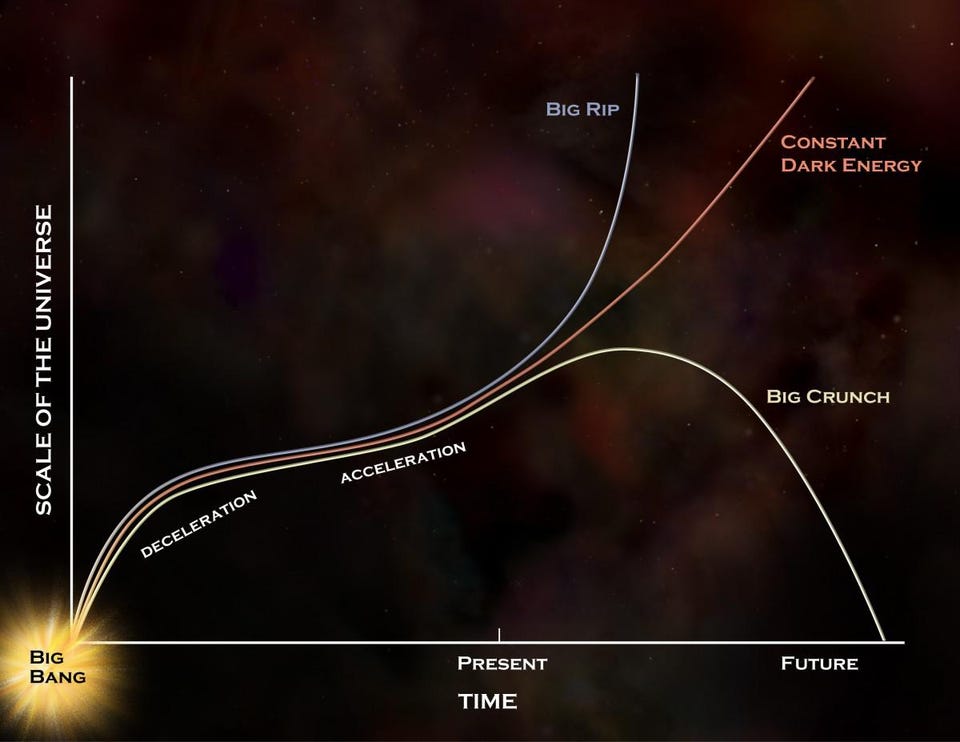 So what's going to happening in the future??
So what's going to happening in the future??
The Fate of the Universe :
The past history of the Universe is one of an early, energetic time. As
the Universe expanded and cooled, phenomenon became less violent and
more stable.
This ruling law of Nature during the evolution of the Universe has been
entropy, the fact that objects go from order to disorder. There are
local regions of high order, such as our planet, but only at the cost of
greater disorder somewhere nearby.
If the Universe is open or flat (as our current measurements and
theories suggest) then the march of entropy will continue and the fate
of our Universe is confined to the principle of heat death, the flow of
energy from high regions to low regions.
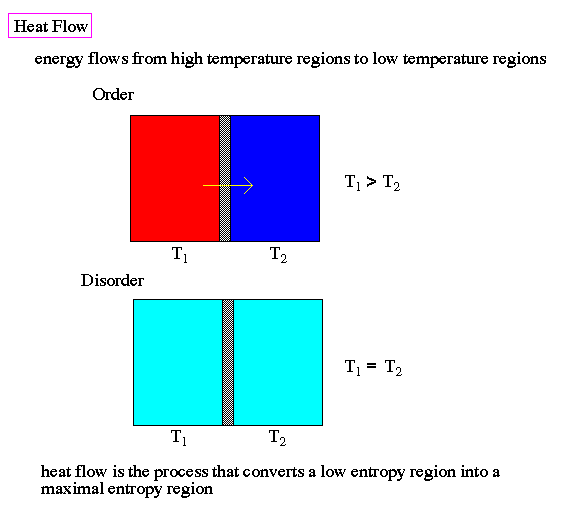 With this principle in mind, we predict the future of the Universe will
pass through four stages as it continues to expand.
With this principle in mind, we predict the future of the Universe will
pass through four stages as it continues to expand.
Stellar Era :
The Stellar Era is the time we currently live in, where most of the
energy of the Universe comes from thermonuclear fusion in the cores of
stars. The lifetime of the era is set by the time it takes for the
smallest, lowest mass stars to use up their hydrogen fuel.
The lower mass a star is, the cooler its core and the slower it burns its
hydrogen fuel (also the dimmer the star is). The slower it burns its
fuel, the longer it lives (where `live' is defined as still shining).
The longest lifetime of stars less than 1/10 a solar mass (the mass of
our Sun) is 1014 years.
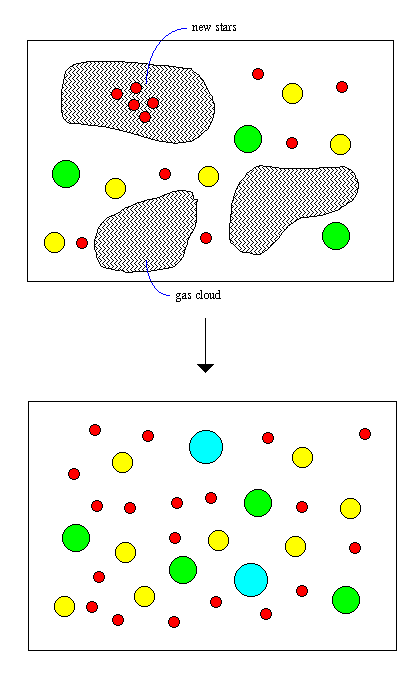 New stars are produced from gas clouds in galaxies. However,
1014 years is more than a
sufficiently long enough time for all the gas to be used up in the
Universe. Once the gas clouds are gone, all the matter in the
Universe is within stars.
New stars are produced from gas clouds in galaxies. However,
1014 years is more than a
sufficiently long enough time for all the gas to be used up in the
Universe. Once the gas clouds are gone, all the matter in the
Universe is within stars.
Degenerate Era :
Once all the matter has been converted into stars, and the hydrogen
fuel in the center of those stars has been exhausted, the Universe
enters its second era, the Degenerate Era. The use of the word
degenerate here is not a comment on the moral values of the Universe,
rather degenerate is a
physical word to describe the state of matter that has cooled to
densities where all the electron shell orbits are filled and in their
lowest states.
During this phase all stars are in the form of white or brown dwarfs, or
neutron stars and black holes from previous explosions. White and brown
dwarfs are degenerate in their matter, slowly cooling and turning into
black dwarfs.
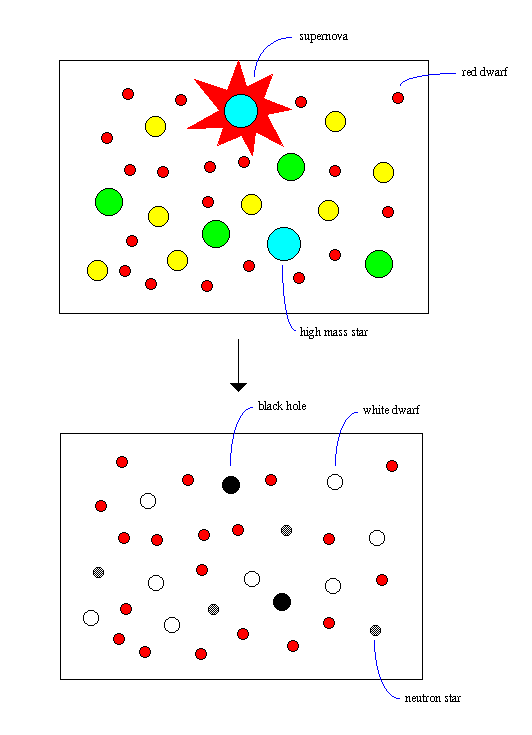 During this era, galaxies dissolve as stars go through two-body
relaxation. Two-body relaxation is when two stars pass close to one
another, one is kicked to high velocity and leaves the galaxy, the other
is slowed down and mergers with the Galactic black hole in the center of
the galaxy's core. In the end, the Universe becomes filled with free
stars and giant black holes, leftover from the galaxy cores.
During this era, galaxies dissolve as stars go through two-body
relaxation. Two-body relaxation is when two stars pass close to one
another, one is kicked to high velocity and leaves the galaxy, the other
is slowed down and mergers with the Galactic black hole in the center of
the galaxy's core. In the end, the Universe becomes filled with free
stars and giant black holes, leftover from the galaxy cores.
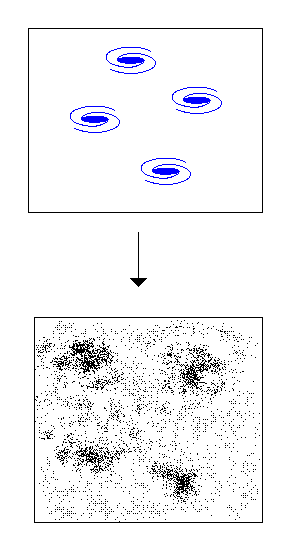 The Universe would evolve towards a vast soup of black dwarf stars
except for process known as proton decay. The proton is one of the most
stable elementary particles, yet even the proton decays into a positron
and a meson on the order of once per 1032 years. Thus, the
very protons that make up black dwarf stars and planets will decay and the
stars and planets will dissolve into free leptons. This all takes about
1037 years.
The Universe would evolve towards a vast soup of black dwarf stars
except for process known as proton decay. The proton is one of the most
stable elementary particles, yet even the proton decays into a positron
and a meson on the order of once per 1032 years. Thus, the
very protons that make up black dwarf stars and planets will decay and the
stars and planets will dissolve into free leptons. This all takes about
1037 years.
Black Hole Era :
Once all the protons in the Universe have decayed into leptons, the only
organized units are black holes. From Hawking radiation, we know that
even black holes are unstable and evaporate into electrons and positrons.
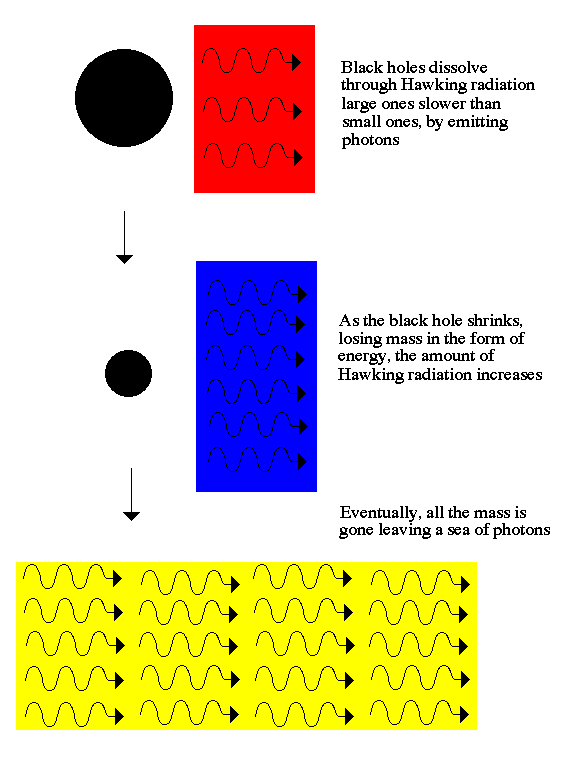 This process is extremely slow, varying inversely as the mass of the
black hole. For Galactic mass black holes the time to dissolve can
last up to 10100 years. The result is a
bunch of photons, slowly cooling in the expanding Universe.
This process is extremely slow, varying inversely as the mass of the
black hole. For Galactic mass black holes the time to dissolve can
last up to 10100 years. The result is a
bunch of photons, slowly cooling in the expanding Universe.
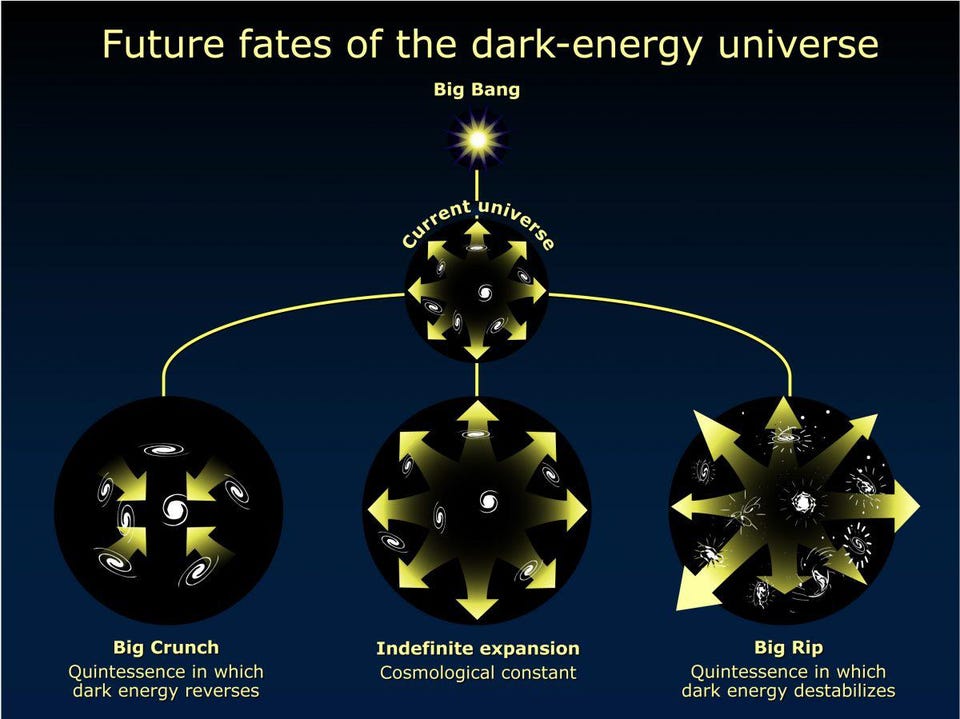 The evolution into the Dark Era depends on the form of dark energy, the only
remaining component. With three possible futures, just like the open, flat and
closed Universes in an earlier lecture when we thought matter dominated the future of
the Universe. Now we know it is controlled by dark energy.
The evolution into the Dark Era depends on the form of dark energy, the only
remaining component. With three possible futures, just like the open, flat and
closed Universes in an earlier lecture when we thought matter dominated the future of
the Universe. Now we know it is controlled by dark energy.
Dark Era or the Big Rip:
After all the black holes have evaporated, the Universe consists of an
expanding sea of very long wavelength photons and neutrinos. This is a
system of maximum disorder, no coherent structures or objects. No sources
of energy, and no sinks as well. The rest of time is simply a continual
lower of energy until the state of quantum vacuum is reached.
However, the further fate of the Universe depends on the energy density of dark
energy. Since we really do not know what dark energy is, this becomes speculative.
We can parameterize dark energy by its equation of state, w, the ratio between its
pressure, P, and density, ρ, w=P/ρ. If w > 0, big crunch time. If -1 < w <
0, then the Universe expands, but dark energy dissipates. If w < -1, then dark
energy is in the form of phantom energy and its density increases as the Universe
expands.
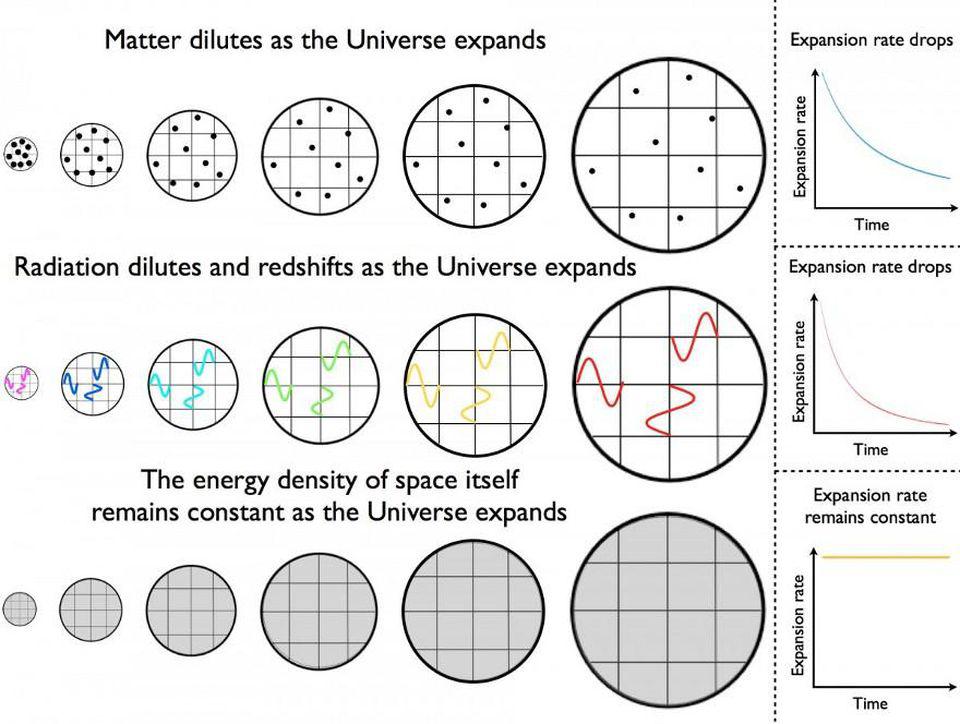 A Universe dominated by phantom energy expands at an ever-increasing rate.
However, this implies that the size of the observable universe and the particle
horizon is
continually shrinking; the distance to the edge of the observable universe
which is moving away at the speed of light from any point moves ever
closer. When the size of the observable universe becomes smaller than any
particular structure, no interaction by any of the fundamental forces
(gravitational, electromagnetic, weak, or strong) can occur between the
most remote parts of the structure. When these interactions become
impossible, the structure is "ripped apart". The model implies that after a
finite time there will be a final singularity, called the "Big Rip", in
which all distances diverge to infinite values.
A Universe dominated by phantom energy expands at an ever-increasing rate.
However, this implies that the size of the observable universe and the particle
horizon is
continually shrinking; the distance to the edge of the observable universe
which is moving away at the speed of light from any point moves ever
closer. When the size of the observable universe becomes smaller than any
particular structure, no interaction by any of the fundamental forces
(gravitational, electromagnetic, weak, or strong) can occur between the
most remote parts of the structure. When these interactions become
impossible, the structure is "ripped apart". The model implies that after a
finite time there will be a final singularity, called the "Big Rip", in
which all distances diverge to infinite values.
About 60 million years before the end, gravity would be too weak to hold
the Milky Way and other individual galaxies together. Approximately three
months before the end, the Solar System (or systems similar to our own at
this time, as the fate of the Solar System 22 billion years in the future
is questionable) would be gravitationally unbound. In the last minutes,
stars and planets would be torn apart, and an instant before the end, atoms
would be destroyed.
The current measured value for w is -0.99 +/- 0.1, so stand-by.












